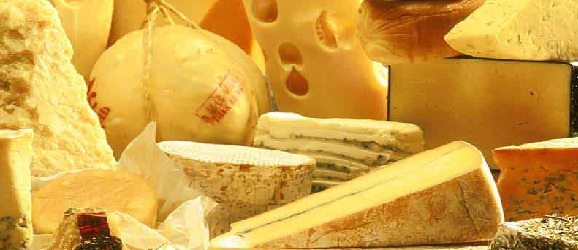Gouda Grief! Cheese Is Over 7,000 Years Old
This article is more than 2 years old

I never spend any of my free time writing love letters to foods. I don’t write love songs to them either. I mean, just the idea of it is crazy. They’re foods. They can’t hear or read the words I spent years putting together in appreciation for what they do for me and my gut. It’s just stupid, is what it is. However, if I was to do something that dumb and essentially useless, I would direct all of my attention to cheese, the most wonderful of dairy products, with varieties exceeding most other so-called “real foods.” If only milk came in as many flavors. I had dreams of changing this website to Giant Freakin’ Cheesewheel, but I never had the courage to speak up to my elders. Speaking of elders, cheese is 7,000 years old, so show some respecorino.
If you didn’t think that a study about cheese history was coming out of the U.K., then I have no accurate method for judging you as a person. For a study published in the journal Nature, research teams from the University of Bristol’s Organic Geochemistry Unit, Princeton University, and several Polish universities have proven that prehistory Northern Europeans could have been putting cheese on their brontosaurus burgers, if only they’d actually had brontosaurus burgers.
Studying pottery from the Kuyavia region of Poland, the teams used lipid biomarkers and stable isotope analysis, finding fatty acids preserved in the pottery itself, dictating specific uses for different kinds of pottery, itself not proven before now. Some, like pots, showed only signs of carcass fats, suggesting they’d been used solely for meat preparation, and bottles showed evidence of beeswax, which would have been used to seal water or other liquids inside.
But we already knew people were eating meat and drinking water. Some of the ceramics were perforated, and for years were thought to have been used in straining dairy products. These early sieves showed signs of milk residue, as did other non-perforated bowls, signalling their combined use in dairy processing.
It’s easy for me to sit here and think about all the lovely cheeses there are to choose from to match my palate, but cheese played a far more important role at the time, in helping to reduce the lactose intolerance naturally affecting the early population. Processing the milk allowed for reduced lactose intake, and allowed for longer preservation, easier transport, and for milk’s nutritional side to be experienced without immediate illness.
As Bristol PhD student Melanie Salque said, “Before this study, it was not clear that cattle were used for their milk in Northern Europe around 7,000 years ago.” So naturally, you will leave this story picturing a lonely, loinclothed caveman milking a cow for the first time, never stopping to wipe away his milk mustache.












